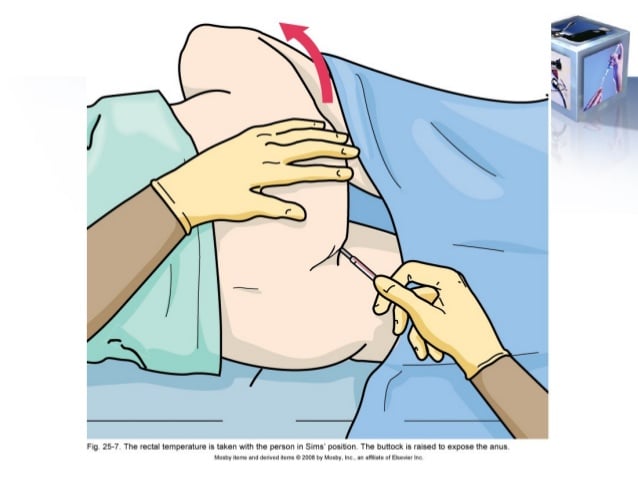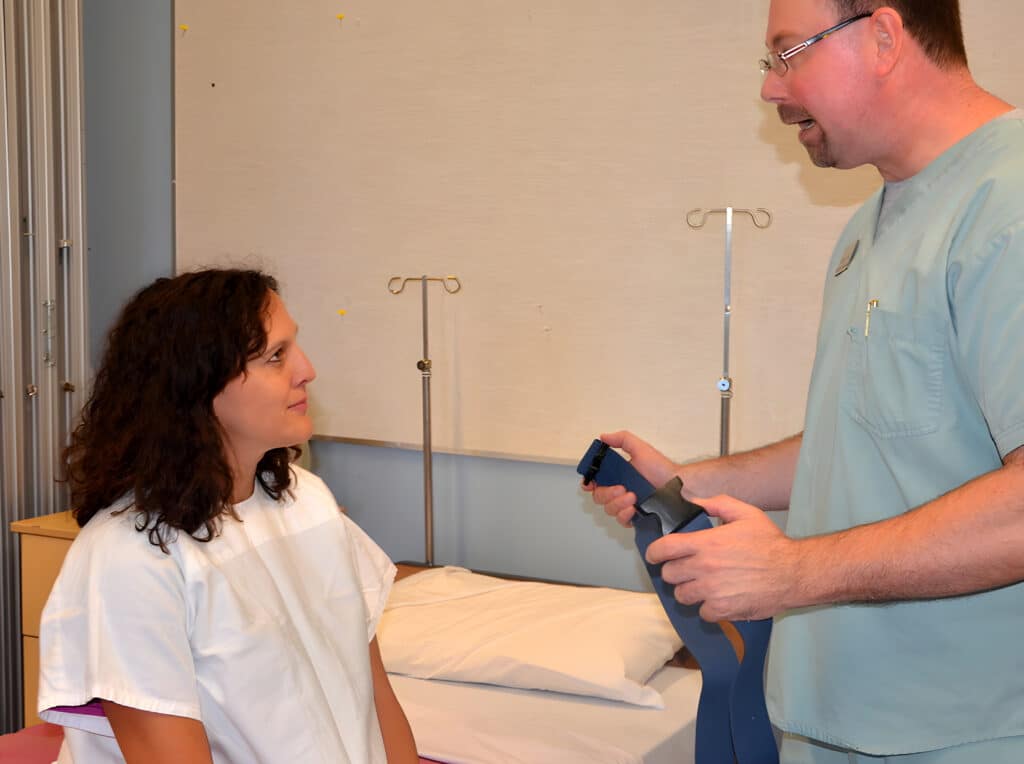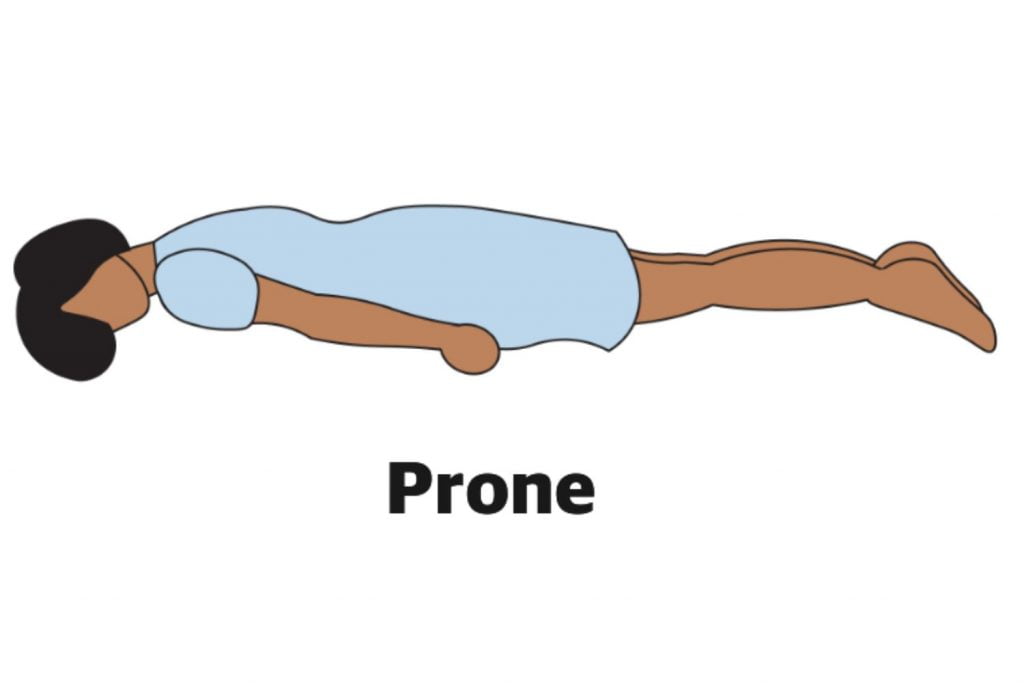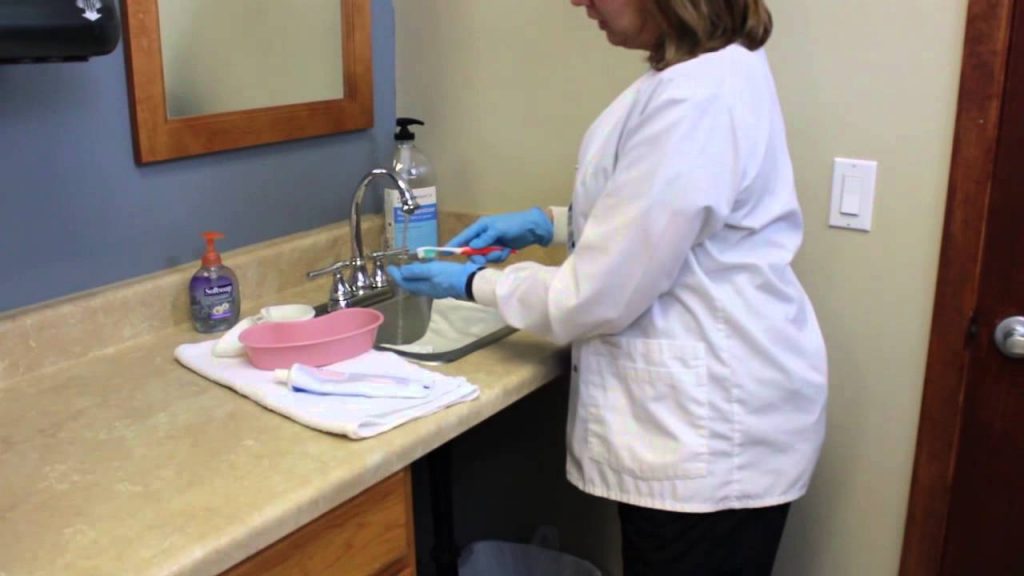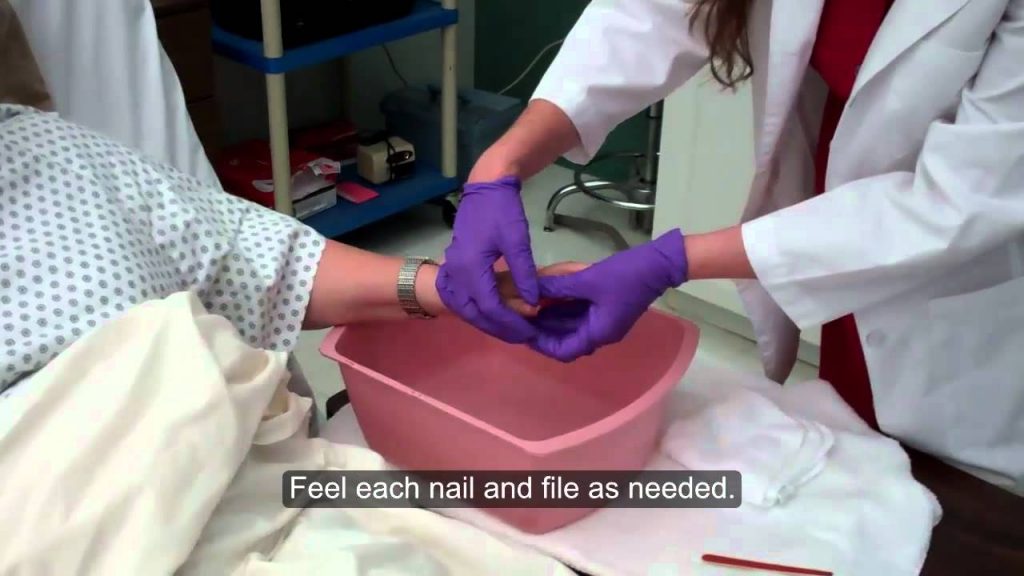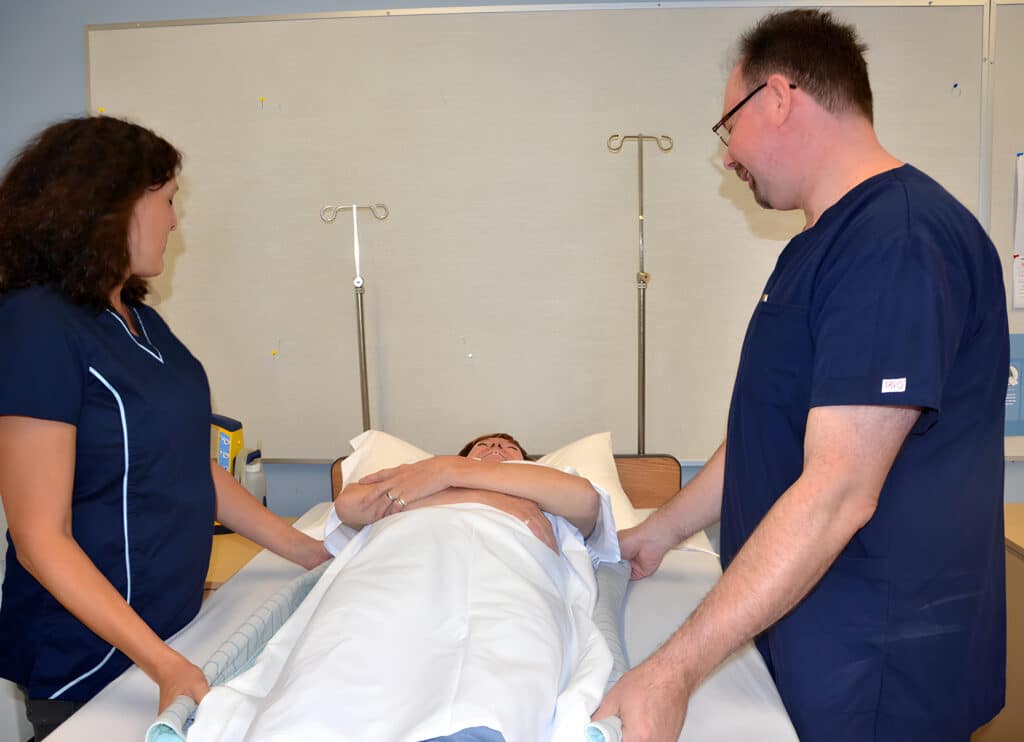Written by Hollie Finders, RN
Hollie Finders is a registered nurse with years of experience working in the health care field. She has degrees in both biochemistry and nursing. After working with patients of all ages, Hollie now specializes in pediatric intensive care nursing. Hollie’s LinkedIn
Procedure
Equipment needed: rectal thermometer, disposable probe cover, lubricant, tissue, and gloves
- Perform hand hygiene and put on gloves.
- Explain the procedure to the patient and ask for their assistance in following directions.
- Raise the side rail on the patient’s left side for safety. If the bed can be raised, adjust it to a comfortable working height.
- Assist the patient into Sims’ position (left side lying).
- Adjust the linens to expose only the buttocks.
- Apply a disposable cover to the temperature probe. Be sure the probe cover is secure and locked into place.
- Apply an adequate amount of lubricant to the probe cover. Ensure the tip and 1-2 inches of the probe is lubricated.
- Using one hand, separate the buttocks to expose the anus.
- With the other hand, insert the lubricated probe 1-1.5 inches into the rectum in the direction of the umbilicus. If there is any resistance, stop the procedure immediately, withdraw the probe carefully, and notify the medical professional. Do not force the probe into the rectum.
- Hold the probe in place until the thermometer signals completion (depending on the device, it may flash or beep). Read the temperature on the electronic display screen.
- Gently remove the probe and eject the disposable probe cover into the waste bin.
- Use a tissue to wipe away any excess lubricant or feces found around the patient’s anus. Dispose of the tissue in the proper waste receptacle.
- Assist the patient back into a comfortable position and, if raised, return the bed to the lowest setting.
- Return the thermometer to its base unit.
- Remove gloves and perform hand hygiene.
- Record temperature, method used (rectal), date, and time in the patient’s chart.
- Alert the medical professional of any changes in the patient’s condition.
Important Information
A rectal temperature provides the most accurate core body temperature reading compared to other non-invasive methods [1]. This makes a rectal temperature desirable; however, this procedure comes with more patient discomfort and more safety risks (bowel perforation, mucosal damage, and/or vagus nerve stimulation) than the other temperature measurement methods [2]. In order to avoid these risks, the nurse’s assistant must communicate with the patient throughout the procedure, encouraging him or her to relax, take deep breaths, and remain still.
Prior to performing a rectal temperature, the nurse’s assistant should verify with the nurse that the patient does not have any of the following contraindications: diarrhea, hemorrhoids, rectal bleeding, rectal disease, recent rectal surgery, bleeding tendencies, neutropenia, or certain heart conditions [3].
References
1. https://www.ncbi.nlm.nih.gov/pubmed/7663592

